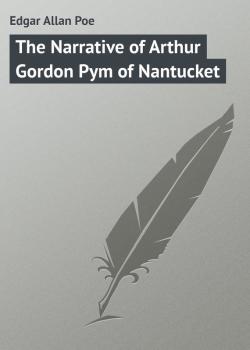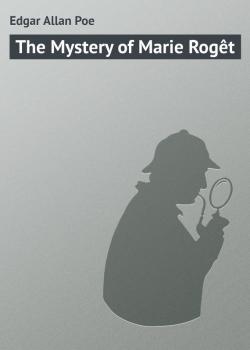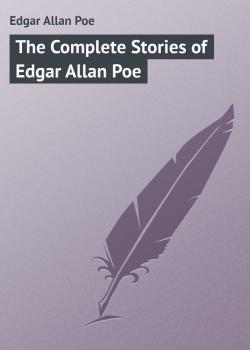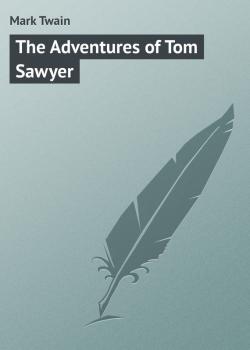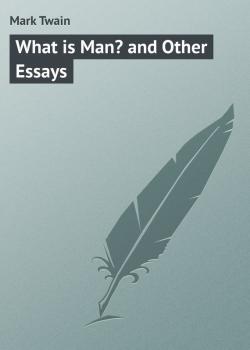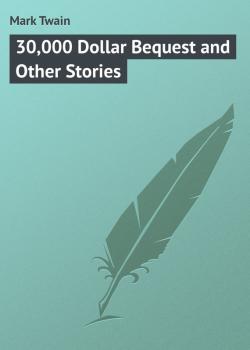Иностранный паблик на Литресе
Все книги издательства Иностранный паблик на ЛитресеThe Narrative of Arthur Gordon Pym of Nantucket
This rousing sea adventure follows a New England boy, Pym, who stows away on a whaling ship with its captain's son, Augustus. The two boys, who find themselves repeatedly on the brink of discovery or death, witness many hair-raising events, including mutiny, savagery, cannibalism, and frantic pursuits.
The Mystery of Marie Rogêt
"The Mystery of Marie Rogêt", often subtitled A Sequel to "The Murders in the Rue Morgue", is a short story by Edgar Allan Poe written in 1842. This is the first murder mystery based on the details of a real crime. It first appeared in Snowden's Ladies' Companion in three installments, November and December 1842 and February 1843.
The Complete Stories of Edgar Allan Poe
Best known for his tales of mystery and the macabre, Poe was one of the earliest American practitioners of the short story and is sometimes considered the inventor of the detective fiction genre. He is further credited with contributing to the emerging genre of science fiction. His fiction spans multiple genres, including horror fiction, adventure, science fiction, and detective fiction, a genre he is credited with inventing.
The Adventures of Tom Sawyer
The adventures of a mischievous young boy and his friends growing up in a Mississippi River town in the nineteenth century.
What is Man? and Other Essays
"What is Man?" was Twain's most serious, philosophical and private book. He kept it locked in his desk, considered it to be his Bible, and spoke of it as such to friends when he read them passages. He had written it, rewritten it, was finally satisfied with it, but still chose not to release it until after his death. It appears in the form of a dialogue between an old man and a young man who discuss who and what mankind really is and provides a new and different way of looking at who we are and the way we live. Anyone who thinks Twain was not a brilliant philosopher should read this book.
The Tenant of Wildfell Hall
Gilbert Markham is deeply intrigued by Helen Graham, a beautiful and secretive young widow who has moved into nearby Wildfell Hall with her young son. He is quick to offer Helen his friendship, but when her reclusive behavior becomes the subject of local gossip and speculation, Gilbert begins to wonder whether his trust in her has been misplaced. It is only when she allows Gilbert to read her diary that the truth is revealed and the shocking details of her past.
The American Claimant
"The American Claimant" is a comedy of mistaken identities and multiple role switches―fertile and familiar Mark Twain territory. Its cast of characters include an American enamored of British hereditary aristocracy and a British earl entranced by American democracy.Twain uses this over-the-top comic frame to explore some serious issues as well-such as the construction of self and identity, the role of the press in society, and the moral and social questions raised by capitalism and industrialization in the United States. A unique melange of science fiction and fantasy, romance, farce, and political satire, Twain's least-known comic novel is both thought-provoking and entertaining.
Eureka
"Eureka" (1848) is a lengthy non-fiction work by American author Edgar Allan Poe (1809–1849) which he subtitled "A Prose Poem", though it has also been subtitled as "An Essay on the Material and Spiritual Universe". Adapted from a lecture he had presented, Eureka describes Poe's intuitive conception of the nature of the universe with no antecedent scientific work done to reach his conclusions. He also discusses man's relationship with God, whom he compares to an author.
Agnes Grey
At age 19 Anne Brontë left home and worked as a governess for a few years before becoming a writer. Agnes Grey was an 1847 novel based on her experience as a governess. Bronte depicts the precarious position of a governess and how that can affect a young woman. Agnes was the daughter of a minister whose family was in financial difficulty. She has only a few choices for employment. Agnes experiences the difficulty of reining in spoiled children and how wealth can corrupt morals. She later opens a school and finds happiness.
30,000 Dollar Bequest and Other Stories
Bringing together 38 tales and sketches, "The 30 000 Dollar Bequest and Other Stories" provides a rare long view of Twain's work, covering virtually his entire career, from "Advice to Young Girls" (a spoof that appeared in 1865, just months before he achieved national acclaim for his "Jumping Frog" tale), to the title story, written in 1904.
